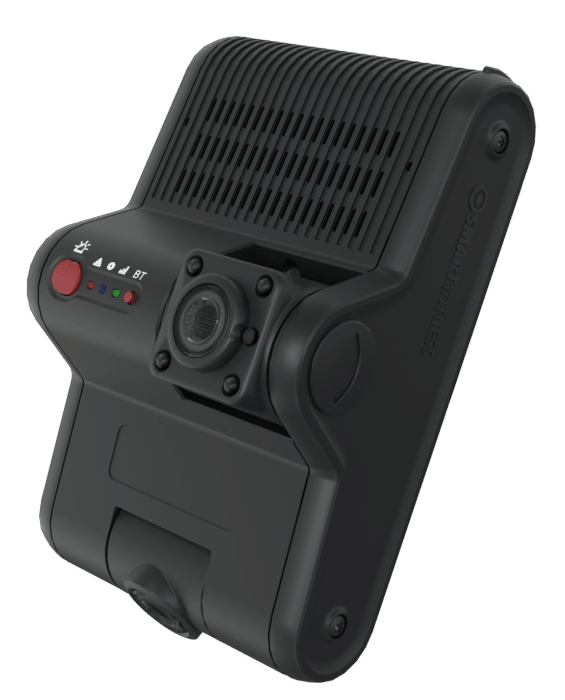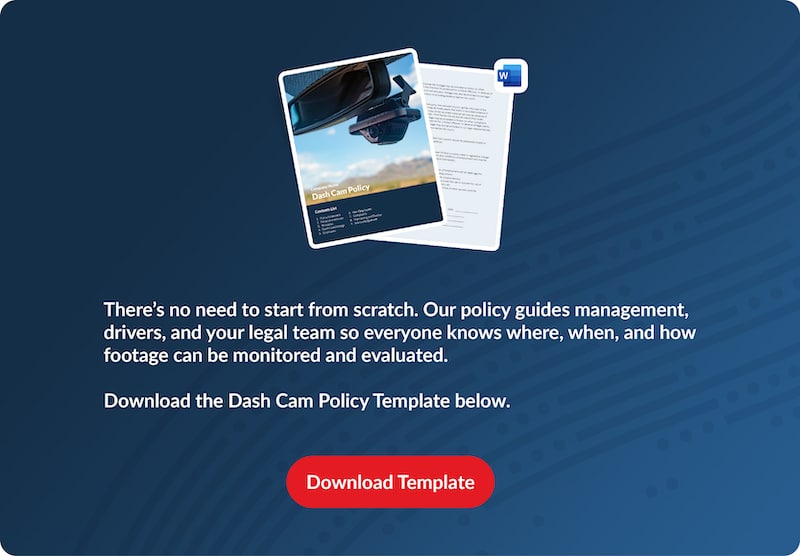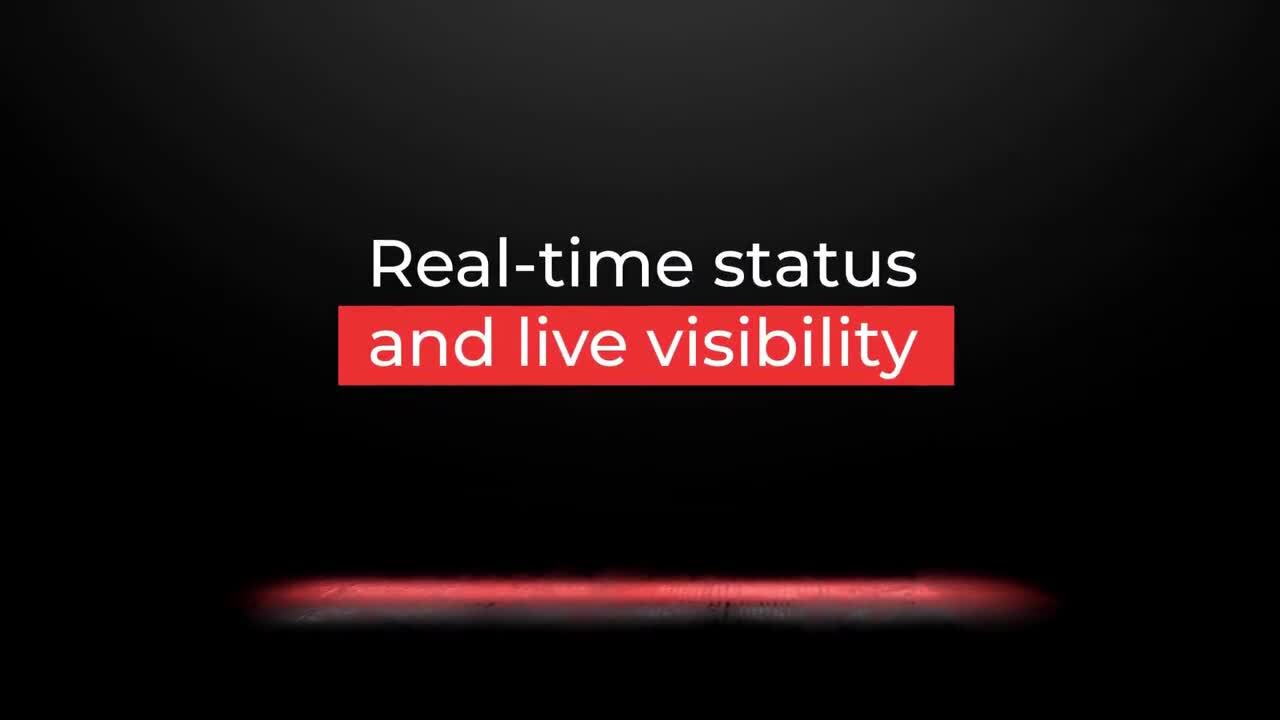
Dash Cam Laws:
Are Dash Cameras Legal in Commercial Vehicles?
If you want to start a heated debate with commercial truck drivers, just mention dash cams. Conversations about these devices often sway from individual dash cam laws to philosophical concerns to conspiracies and right back again.
Since dash cams are shifting from a recommendation to a requirement for lots of businesses, this is a great time to get a basic understanding of dash cams laws for commercial vehicles, and explore the nuances around driver-facing dash cams. Many transportation companies have quelled their employees’ worries concerning forward-facing cameras, however, many drivers are wary about having one aimed at them.
In this blog, we’ll give an overview of dash cam law basics, and cover the forward-facing dash cam law debate. Just remember: this information is not to be taken as legal advice.
Dash Cam Laws by State
While laws defining the use of dashboard cameras may vary slightly by state, they share enough commonalities to be divided into four main groups. Those segments focus on providing a clear view through the front windshield and legally obtaining consent for audio or video recording. Many state driving laws restrict the use of non-transparent objects, recording employees or customers without consent, and recording devices to an area of five to seven inches. States included in multiple groups will be listed under the regulation that takes priority.
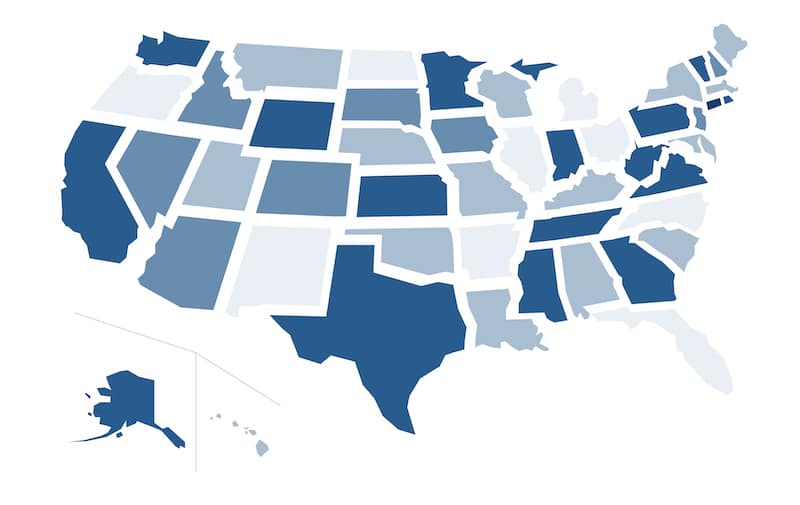
1. Don’t Block the Windshield or Impede the View of the Road
- Arkansas
- Colorado: Cameras must not be reflective to prevent external driver distractions
- Connecticut
- Georgia
- Idaho
- Iowa
- Kansas
- Kentucky
- Louisiana
- Maine
- Mississippi
- New Jersey
- New Mexico
- New York
- North Dakota
- Ohio
- Oklahoma
- Rhode Island
- South Carolina
- Tennessee
- Texas
- West Virginia
- Wyoming
2. Use Specific Cameras and Mounting Locations
- Alaska: Devices must be smaller than five square inches on the driver’s side or seven square inches on the passenger side
- Arizona: Cameras must be mounted on the dashboard or rear-view mirror
- Hawaii: Must take up less than five square inches in the top or bottom corners of the windshield
- Indiana: Must be small than 4” and placed in the lower corner of the window on the passenger side
- Maryland: Installation must be under the AS-1 line of the motor vehicle’s windshield, within 5 inches of the top, or within the bottom corner inside an area of seven square inches
- Minnesota: Cameras can only be mounted behind or very close to the rear-view mirror, it’s illegal to mount them anywhere else
- Nevada: Installation must be at the bottom corner on the right side of the windshield or the dash
- Utah: Mount within four inches of the top of the window, in the bottom driver’s side corner, on the dash, or rear windows
- Vermont: It’s legal to mount dash cams on the passenger’s lower corner if they are smaller than 4” vertically and 12” horizontally or the driver’s upper corner so long as they’re smaller than 2” vertically and 2.5” horizontally.
- Virginia: Do not mount to front, side, or rear windows, only dashboard mounts are legal
- Wisconsin: Mount behind the review mirror and maintain clearance of your windshield wipers’ radius
3. Must Get Consent to Record Audio or Film on Private Property
- Alabama: Also cannot obstruct the windshield
- California: Devices must be smaller than five inches on the top middle of the windshield or seven inches on the lower half corners, may not interfere with any airbags
- Delaware: Everyone in the vehicle and customers must consent to audio recording and cannot obstruct the windshield
- Florida: Must also not mount on the windshield
- Illinois: Must mount dash cams on the left side of the windshield and should avoid recording law enforcement activity
- Massachusetts: Cannot block the windshield but can be mounted to side windows if it reflects less than 35% of light
- Michigan: Do not mount on windshields, however, there is no restriction for mounting location for motor vehicles that weigh more than 10,000 pounds or carry hazardous waste
- Montana: It’s also illegal to mount anywhere on the windshield, opt for a dashboard mount
- Nebraska: And mount on the dashboard as windshield mounting is illegal
- New Hampshire: Driver-facing or road-facing dash cams must be mounted on the dashboard
- Oregon: Mount dashcams to the dashboard to avoid legal consequences
- Pennsylvania: It’s illegal to mount dash cameras on the windshield and should the device have a screen, it must be able to turn off while driving
- South Dakota: Windshield mounting of dash cams is illegal, install hardware on your dashboard
- Washington: Mount on your dashboard, it’s illegal to mount on the windshield
4. States with No Laws that Restrict Dash Cam Implementation or Location
- Missouri
- North Carolina
Do Driver-Facing Dash Cams Invade Privacy?
The dispute around dash cam laws spans all types of trucks from local delivery vehicles to long-haul trucks. No matter how short the route, some drivers feel unsettled at the thought of supervisors spying on them periodically without warning. Long-haul drivers even argued that, because they often sleep and eat in their trucks, it’s where they live; and they objected to being watched inside of their homes.
That argument fell short with the California Attorney General, which concluded that the use of the cameras doesn’t violate any state laws.
Some attorneys are fielding questions about invasion of privacy, especially if the cameras are pointed into sleeper berths. They agree with the California AG that the sleeper berth is not legally a home. An attorney from Truckers for Justice said, “I get five-six potential clients every day, but for every 10 drivers who call me there may be one legitimate case.”
Full disclosure is critical, too. On both the federal and state level, there are privacy and wiretapping laws that restrict recording someone’s voice or image without their consent. In other words, organizations must let their employees know if and how they’re using rear-facing dash cams.
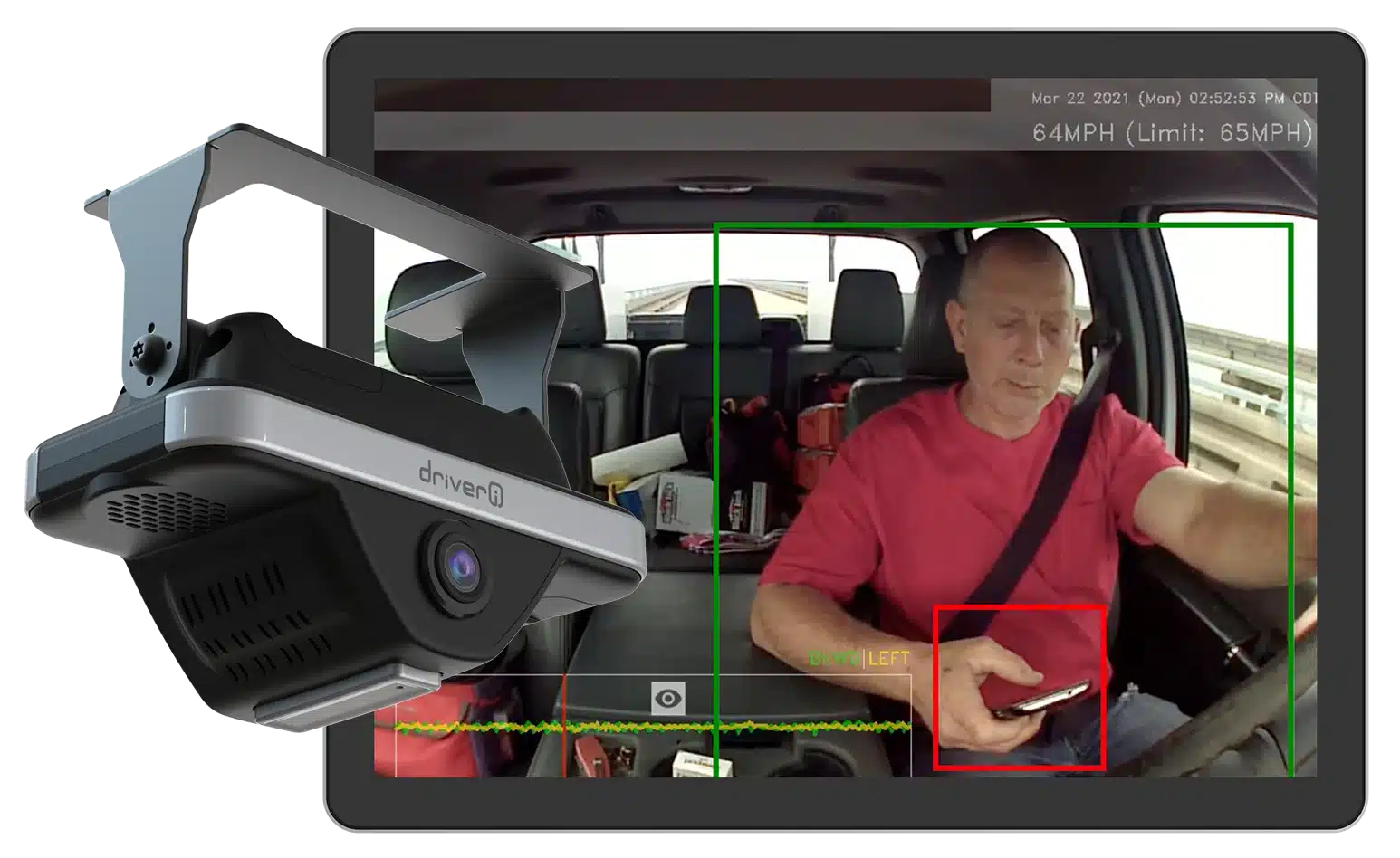
Benefits of Driver-Facing Cameras
A law firm specializing in transportation law wrote that using driver-facing cameras shows a company’s commitment to driver training. Also, the cameras can prove that the driver wasn’t distracted, tired, or using a smartphone.
In their opinion, driver-facing dashcams can protect drivers and organizations in an accident. (We agree!)
In some situations, truck dash cams can encourage companies to stand by their drivers. In this case, a police officer appeared to run his patrol car into a delivery truck. Based on the video evidence, the company rallied behind the truck driver.
There’s also the possibility of reducing liability:
“One of the most significant benefits has been decreasing liability. According to the FMCSA, the average cost of all large truck crashes is $91,000 – which increases to $200,000 if there are injuries, and $3.6 million should the crash result in a fatality. However, having real-time video evidence has helped to exonerate companies in crash lawsuits.” This obviously gives employers and extreme advantage in terms of repair costs, insurance premiums, and driver ratings.
How Employers Use Dash Cam Footage
Some drivers suspect that their employers are watching them at all times. The Internet is rife with unverifiable stories (imagine that!) about trucking companies randomly spying on drivers, even while the truck is parked.
But the cameras only transmit a short segment of data encompassing time before and after a triggering incident. Still, some drivers remain suspicious that their companies use the in-cab cameras to spy on them even while their trucks are off and they’re no longer on the road. While this is theoretically possible, it’s just not efficient to have employees pouring over hours of video footage. It would take too much time to find anything of interest if it’s not associated with a triggering event.
In addition, this is primarily a scenario for long-haul vehicles. Many of the fleets using in-cab cameras focus on local deliveries, which means more stops and more opportunities for accidents to occur. Some unions are also urging their members to negotiate policies about how employers can use the footage.
Taking Advantage of What Dash Cams Record
If your organization plans to use driver-facing cameras, it’s critical to be aware of the dash cam laws and other related legal matters. This isn’t always easy because, as you’ve seen, they can vary by jurisdiction. But getting employee buy-in, being transparent, and emphasizing the possibility to help them in an accident can help.
By engaging in an open conversation with drivers about how this technology can help exonerate them during events when they were not at fault or even reward their continuously good driving habits – you are far more likely to receive their buy-in for dash cams. This makes for safer roads and helps reward good drivers by providing context for the events. For example, in the past, if a driver is flagged for a harsh braking event it was always seen as a negative driver event (aggressive driving).
Now with cameras in the equation, you can see the context around a harsh braking event. If a driver brakes harshly, but it is because a child ran out into the street, you can discern that event was actually the result of the driver being alert and thus rewarded for his/her actions. This allows organizations to reward that driver for making the right decision and it also exonerates them should there be an altercation that requires legal intervention.
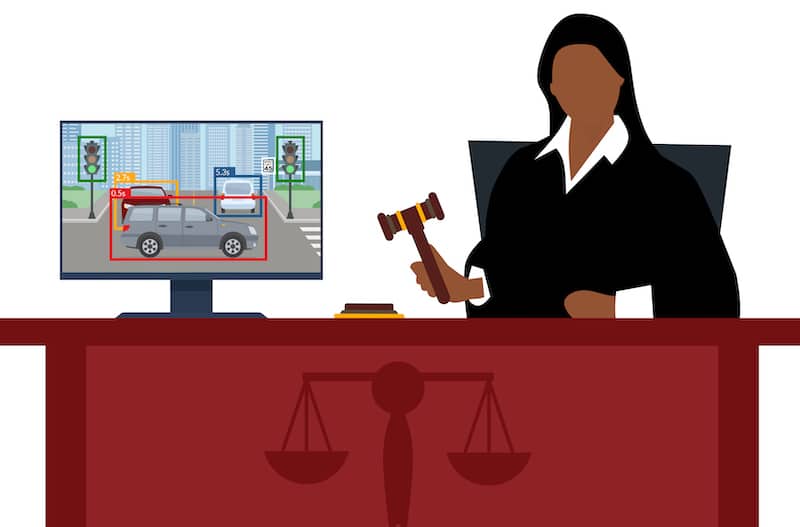
Is Dash Cam Footage Admissible in Court?
If an accident goes to civil or criminal court, who can use the footage? What’s covered by dash cam laws? Either party in the case, according to legal experts.
“In every jurisdiction across the country – including all federal and state courts – any video or audio recording captured by the cameras likely would be considered discoverable information in litigation and would have to be produced to the complaining party,” James J. Franklin wrote in an article for McNees.
It’s also possible that certain laws may require organizations to preserve recordings and reports for a certain time after a triggering event. They could be open to legal action if they don’t comply. The best way to prevent any further damage to your wallet or reputation is to equip your vehicles with a certified camera system for reliable roadside review.
Protect Your Employees and Assets
Answering the question “Are dash cams legal?” isn’t easy because of the different laws at local and regional levels. More often than not, though, the answer will be “Yes.”
Still, fleet managers should do their due diligence to cover their legal bases when considering using smart cameras in their organization’s vehicles.
Need to know more about in-cab cameras, dash cams, and other related technology? Book a demo with our team to learn how they improve safety and promote accountability!
Get a Price Quote
Ready to see how GPS Insight fleet and field technology can work for you?


